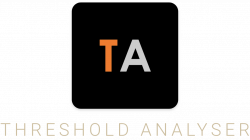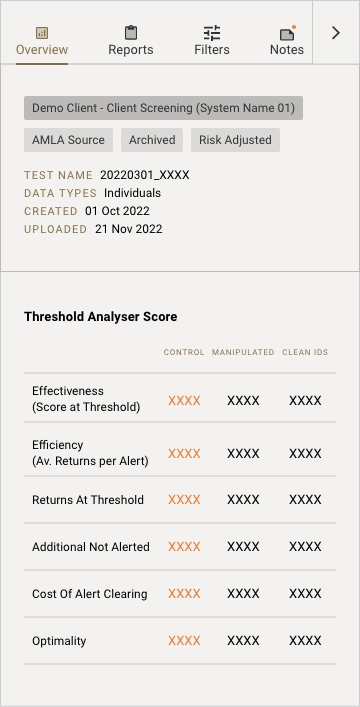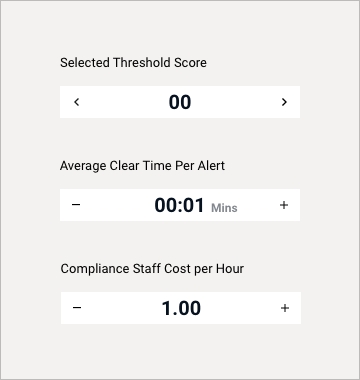
Threshold Analyser is a new analytical approach to identifying optimum threshold parameters when tuning a sanction screening system.
Identify optimum threshold parameters
Our solution will model a decrease in the number of false positives produced by a system without reducing accuracy, thus ensuring maximum resource efficiency at specified threshold levels.
An interactive threshold level selection toggle can be moved in Analyser Online to view the impact on efficiency and effectiveness levels with each selected threshold change.

Risk-based optimisation
Applying a risk-based optimisation approach will lead to an accepted balance between maximum sanction alert hit rates whilst ensuring maximum resource efficiency at specified threshold levels. From the returned information from the tested system, AML Analytics are able to link the test record back to the name that was matched and the threshold score at which it was matched.
We then determine match rates to control, manipulated and Clean ID test records at each threshold level to analyse the impact on scores if system matching thresholds are decreased or increased.
The relationship between the number of returns and alerts missed per threshold value is used to determine the optimum threshold value. It can be seen that the number of returns will decrease as the threshold is increased, and then conversely, the number of alerts missed will increase as the threshold is increased.
From these metrics, calculate your optimum threshold level whilst taking into account specific risk appetite and aim to improve efficiency scores without adding any additional sanctions risk.
Optimality calculator
The Optimality Calculator can be used to model potential savings on resource in terms of both time and cost for a financial institution at various specified threshold levels.
If the number of low-quality alerts is reduced then fewer analysts will be needed to check these alerts and a high standard of alert review will be maintained.
Model exactly what these cost savings will be for your organisation at any threshold level you wish by entering your own costs into the Optimality Calculator and setting a suggested threshold level to view results immediately.

Our solutions
Cutting-edge RegTech and SupTech testing, validation and risk assessment solutions for financial institutions and regulatory authorities.
Online Risk Based Systems
ORBS (Online Risk Based Systems) is an ingenious new risk framework solution for intelligent reporting and supervision. It has been created to help governments, regulatory authorities and supervisors understand and assess the levels of AML/CFT risk within their jurisdiction.
Learn More
Analyser Online
Analyser Online is our customer communication hub. It provides access to the most advanced hosted testing facility for sanction screening and transaction monitoring system technologies, offering powerful analytics to help our customers understand test results quickly and easily and take remedial action to mitigate financial crime risk.
Learn More
Global Benchmark
Subscribe to Global Benchmark to measure your sanction screening system performance in terms of efficiency and effectiveness and then regularly benchmark your scores to the industry-standard aggregated scores of your peers around the world.
Learn More
Sandbox
Sandbox is a powerful self-assessment tool designed to test the efficiency and effectiveness of your sanction screening system technologies. Sandbox enables firms to create their own sanction screening system tests to suit corporate requirements and risk appetite.
Learn More
Annual Assurance Testing
AAT is a new, versatile solution that provides a flexible approach to testing a sanction screening system, facilitating the creation of a bespoke test on a recurring annual basis.
Red Flag Tests
Red Flag Tests is designed to carry out an on-the-spot transaction monitoring system health check by exercising red flag rules using Smart Scenarios consisting of millions of rows of synthetic transaction data to mimic the exact transactional patterns of defined money laundering typologies.
Transaction Monitoring Validator
TMV (Transaction Monitoring Validator) is an innovative RegTech solution to enable ongoing, frequent validation and testing of a transaction monitoring system in line with current regulatory requirements.
Learn More
Sanctions Alert Service
The free Sanctions Alert Service (SAS) from AML Analytics provides details of real-time updates to important sanction lists worldwide, allowing financial institutions to monitor sanction list changes as they happen.
Ready to talk?
Don’t hesitate to reach out to us.
info@aml-analytics.com
+44 (0) 1264 889 339